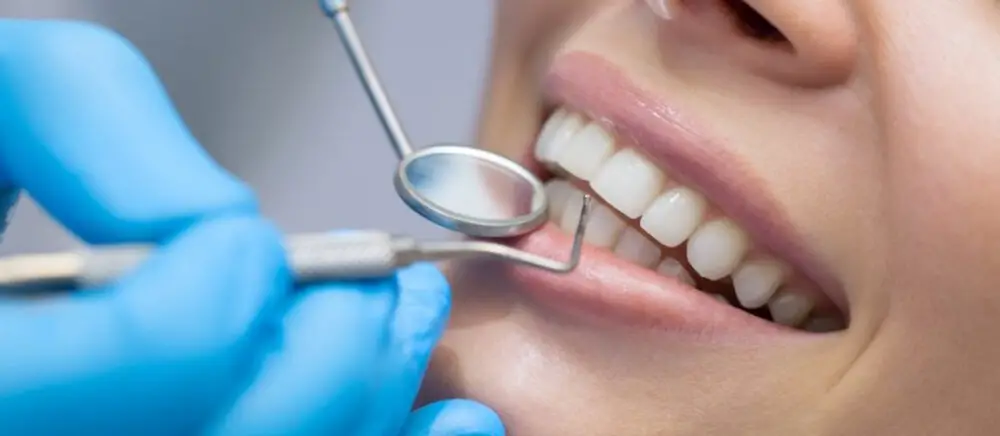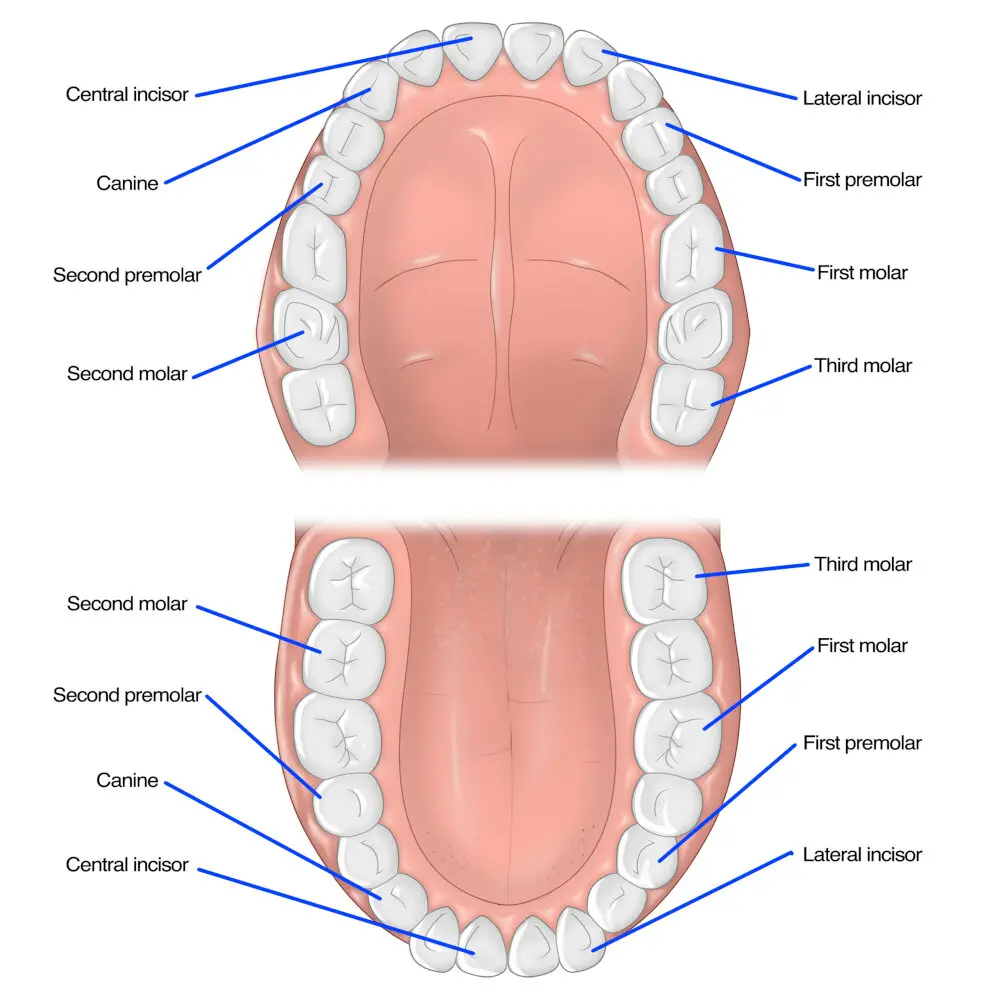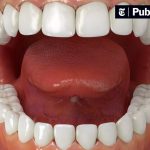Unveiling the Truth: What Really Happens to Your Teeth Under Veneers

A beautiful smile is considered a symbol of confidence and aesthetic appeal. However, not everyone is blessed with a naturally perfect set of teeth. Fortunately, dental veneers have emerged as a popular cosmetic dentistry solution that can transform a less-than-perfect smile into a sparkling one. But have you ever wondered what really happens to your teeth under veneers? In this article, we will unveil the truth about dental veneers and their impact on your teeth. Dental veneers are a thin layer of porcelain or composite resin that is placed over the natural teeth to enhance their appearance. They are custom-made to fit the individual’s teeth and designed to match the color and shape of the existing teeth. Veneers can cover a range of dental imperfections, including chipped, cracked, discolored, or irregularly shaped teeth. However, there are some important considerations to be aware of before deciding to get veneers, as they do come with some potential consequences for your natural teeth. Keep reading to discover what really happens to your teeth under veneers.
Veneers are thin, custom-made shells that are placed on the front surface of teeth to improve their appearance. They are often made of porcelain or composite resin and are designed to look like natural teeth. People get veneers for a variety of reasons, including to cover up stained or discolored teeth, to fix chipped or broken teeth, to close gaps between teeth, or to improve the overall shape and size of their teeth. Veneers are a popular cosmetic dentistry option because they can dramatically improve the appearance of teeth in just a few visits to the dentist, and they are generally long-lasting and durable. However, it’s important to understand the potential risks and downsides of veneers, including the fact that they can sometimes damage the underlying tooth structure and may require replacement over time.
Veneers have been a popular cosmetic dental treatment for decades. They offer an easy way to brighten up a smile, cover up imperfections, and improve the overall appearance of teeth. However, many people still wonder what happens to their natural teeth under veneers. While veneers are designed to be long-lasting and durable, they do require some maintenance and care to ensure they don’t damage or weaken the underlying teeth. This article will explore the truth behind what happens to your teeth under veneers, from the preparation process to the long-term effects of this cosmetic dental treatment.
The Veneer Procedure

Dental veneers have become a popular cosmetic dentistry procedure for individuals who want to improve their smile’s appearance. The veneer procedure involves bonding thin porcelain shells onto the front surface of the teeth to cover up discoloration, chips, or gaps. Many people opt for veneers because they provide an immediate transformation, are long-lasting, and require minimal tooth reduction. However, it is essential to understand what really happens to your teeth under veneers to make an informed decision. The veneer procedure involves removing a small amount of tooth enamel to make room for the veneer’s placement. Once the teeth are prepared, impressions are taken and sent to a dental lab where custom veneers are fabricated. During the second appointment, the veneers are bonded onto the teeth using a special adhesive. While the veneer procedure is generally safe and predictable, it is crucial to choose an experienced cosmetic dentist who can properly prepare the teeth, design the veneers, and bond them securely. Additionally, it is important to maintain good oral hygiene practices to ensure the longevity of the veneers and prevent any complications.
If you want to improve the appearance of your teeth, getting veneers can be a good option. The process of getting veneers usually involves several steps. First, your dentist will remove a thin layer of enamel from your teeth to make room for the veneers. Then, they will take impressions of your teeth and send them to a dental lab, where the veneers will be custom-made. In the meantime, you may wear temporary veneers to protect your teeth. Once the veneers are ready, your dentist will bond them to your teeth using a dental cement. This process can take several hours and may require multiple appointments. It’s important to keep in mind that veneers are a permanent solution and may require maintenance and replacement over time.
Before veneers can be placed, the teeth must be prepared to accommodate them. This process involves removing a small amount of enamel from the surface of the tooth, typically about half a millimeter. This is done to create room for the veneer to fit seamlessly over the tooth and to ensure that the final result looks natural and not bulky. The dentist will carefully shape the tooth and take impressions, which will be used to create the veneers in a dental lab. In some cases, temporary veneers may be placed while the permanent ones are being made. While the preparation process may sound daunting, it is typically painless and can be completed in just one or two visits to the dentist.
How Veneers Affect Tooth Structure

When it comes to enhancing your smile, veneers are a popular cosmetic dentistry option. These thin shells, typically made of porcelain, are custom-made to fit over the front surface of your teeth, altering their size, shape, and color. While veneers can significantly improve the appearance of your teeth, it’s essential to understand how they affect your tooth structure. In essence, veneers require some removal of the natural tooth enamel to create space for the shell to sit comfortably on the tooth surface. This process is irreversible and means that you’ll need to have a veneer placed on that tooth for the rest of your life. The amount of tooth structure removed depends on the thickness of the veneer, the condition of your teeth, and your dentist’s preference. On average, the removal of tooth enamel is about 0.5mm or less. This amount is relatively small, but it’s essential to keep in mind that once the enamel is gone, it’s gone for good. Your dentist may recommend a local anesthetic to make the process more comfortable, and you may experience some sensitivity or discomfort afterward. It’s also worth noting that while veneers can last for many years, they will need to be replaced eventually, and the process of removing and replacing them will likely involve further removal of tooth structure.
Veneers are a popular cosmetic dental treatment that can significantly enhance the appearance of teeth. They are thin, custom-made shells made of porcelain or composite resin that are bonded to the front surface of teeth. While veneers can improve the aesthetics of a smile, it’s essential to understand that they can also affect the structure of teeth. The process of preparing a tooth for a veneer involves removing a small amount of enamel from the tooth’s surface, which is irreversible. This removal of enamel can lead to increased tooth sensitivity and weaken the tooth’s structure, making it more susceptible to fracture or decay. Therefore, it’s crucial to weigh the benefits and potential risks of veneers before deciding to undergo the treatment.
Veneers are a popular cosmetic dental treatment that can help improve the appearance of teeth. However, like any dental procedure, there are potential risks and complications associated with veneers. One of the main risks is that the natural tooth structure must be removed in order to place the veneer, which can lead to sensitivity and discomfort. Additionally, if the veneer is not properly fitted or bonded to the tooth, it can become loose or even fall off. In some cases, veneers can also cause gum irritation or inflammation. It’s important to discuss these potential risks with your dentist before deciding whether veneers are the right choice for you.
LongTerm Effects of Veneers

Veneers are a popular cosmetic dental procedure that involves covering the front surface of the teeth with thin shells made of porcelain or composite resin. While veneers can provide an immediate improvement in the appearance of teeth, it’s important to consider the long-term effects of this procedure. One of the most notable long-term effects of veneers is that they are irreversible. Once the natural tooth structure is removed to make space for the veneer, it cannot be replaced. This means that the teeth will always require some form of restoration, whether it be veneers or another type of dental procedure. Additionally, veneers can increase the risk of tooth decay and gum disease if they are not properly cared for. Patients with veneers must maintain good oral hygiene practices, including regular brushing and flossing, to prevent plaque buildup and other dental problems. Another potential long-term effect of veneers is that they may require replacement over time. While veneers are durable and can last for many years with proper care, they are not indestructible. Patients who grind their teeth or engage in other habits that put excessive pressure on the teeth may experience damage or wear on their veneers over time. Additionally, changes in the natural tooth structure due to aging or other factors may require the replacement of veneers to maintain a consistent appearance. It’s important for patients who are considering veneers to talk to their dentist about the potential long-term effects of this procedure and to develop a plan for ongoing dental care to ensure the longevity of their veneers and overall dental health.
Veneers are a popular cosmetic dental treatment that can transform the appearance of your teeth. However, it is important to consider the long-term effects of veneers on teeth. While veneers can improve the look of discolored, misshapen, or chipped teeth, they do require some preparation of the natural teeth, which can cause sensitivity or even damage. Additionally, once the veneers are in place, they cannot be removed without replacing them, which means that your natural teeth are permanently altered. Over time, veneers may also become discolored or damaged, requiring additional dental work to fix. While veneers can provide a beautiful smile, it is important to carefully consider the potential long-term effects before undergoing the procedure.
Veneers, although they can improve the appearance of teeth and give a beautiful smile, can have an impact on oral health over time. The process of applying veneers involves removing a thin layer of enamel from the natural teeth, which can lead to sensitivity and increased risk of decay or damage to the underlying tooth structure. Additionally, if proper oral hygiene is not maintained, bacteria can accumulate between the veneer and the tooth, leading to gum inflammation and potential infection. It is important to consult with a dentist to ensure that veneers are a suitable option and to receive guidance on maintaining good oral health to protect both the veneers and natural teeth underneath.
Alternatives to Veneers

While veneers are a popular cosmetic dental treatment, not everyone is a good candidate for them. Fortunately, there are alternatives to veneers that can help improve the appearance of your teeth. One option is dental bonding, which involves applying a tooth-colored resin to the surface of your teeth to mask imperfections such as chips, cracks, or discoloration. Bonding is a more affordable alternative to veneers and can be completed in a single dental appointment. However, the results may not be as long-lasting as veneers and the bonding material may be prone to staining or chipping over time. Another alternative to veneers is teeth whitening. This is a popular choice for people who are unhappy with the color of their teeth but don’t have any structural issues. There are a variety of professional and at-home whitening options available, including bleaching trays, whitening strips, and in-office treatments. While teeth whitening can be effective in removing stains and brightening your smile, it may not be suitable for everyone, particularly those with sensitive teeth or gum disease. It’s important to talk to your dentist about which teeth whitening option is best for you.
There are several alternative dental treatments that can achieve similar results as veneers. For example, orthodontic treatment can be used to correct misaligned teeth and improve the appearance and function of the smile. Dental bonding is another option that can be used to fill in gaps, repair chips or cracks, and improve the overall appearance of the teeth. Additionally, teeth whitening can be used to brighten and enhance the color of the teeth. It is important to consult with a dental professional to determine the best treatment option based on individual needs and goals.
The use of veneers has become increasingly popular in the field of cosmetic dentistry due to their ability to transform the appearance of teeth. However, it is important to consider the pros and cons of this alternative before deciding to proceed with the procedure. The main advantage of veneers is their ability to correct a variety of dental imperfections, such as discoloration, misalignment, and chipping. They are also durable and long-lasting, with a lifespan of up to 15 years. On the other hand, the downside of veneers is that they require a significant amount of tooth preparation, which can result in sensitivity and discomfort. Additionally, veneers are irreversible, meaning that once they are applied, they cannot be removed. It is crucial to weigh these factors carefully before choosing to undergo veneer treatment.
Veneers are a popular cosmetic dental procedure used to improve the appearance of teeth by covering up imperfections. While veneers can provide many benefits, such as a brighter smile, improved self-confidence, and a more youthful appearance, there are also potential risks associated with the procedure. Some of these risks include tooth sensitivity, damage to the natural tooth structure, and the need for replacement or repair over time. It’s important to weigh both the potential benefits and risks before deciding whether veneers are the right choice for you. Consulting with a qualified dental professional can help you make an informed decision and ensure the best possible outcome for your dental health and overall well-being.
Before deciding to get veneers, it’s highly recommended that you consult with a dentist first. While veneers can transform your smile, there are important factors to consider such as the health of your teeth, the potential risks and benefits, and whether veneers are the right option for you. A dentist can evaluate your oral health and provide professional advice on the best course of treatment. They can also explain the entire procedure, including the preparation of your teeth, the materials used, and the aftercare required. By seeking professional guidance, you can make an informed decision and achieve the best possible outcome for your smile. Remember, your teeth are irreplaceable, so it’s important to prioritize their health above cosmetic improvements.
In conclusion, veneers can be a great solution for those looking to improve the appearance of their teeth, but it’s important to understand the potential risks and drawbacks. While veneers can provide a beautiful and natural-looking smile, they do require some maintenance and may not be suitable for everyone. It’s crucial to work with a qualified and experienced dentist to ensure the veneers are properly placed and cared for. Additionally, it’s important to maintain good oral hygiene habits and avoid habits that could damage the veneers such as biting down on hard objects or using teeth as tools. By understanding the truth about veneers and taking proper care of them, individuals can enjoy a beautiful and healthy smile for years to come.
Conclusion

In conclusion, veneers are a popular cosmetic dental procedure that can transform a person’s smile. While they can provide a long-lasting solution for many dental issues, it’s essential to understand the potential risks and drawbacks of this procedure. It’s crucial to consult with a qualified and experienced dental professional to determine whether veneers are the right choice for you. Proper dental care and maintenance are also necessary to ensure the longevity and health of your veneers and underlying teeth. Ultimately, with the right information and care, veneers can provide a beautiful and confident smile for years to come.




